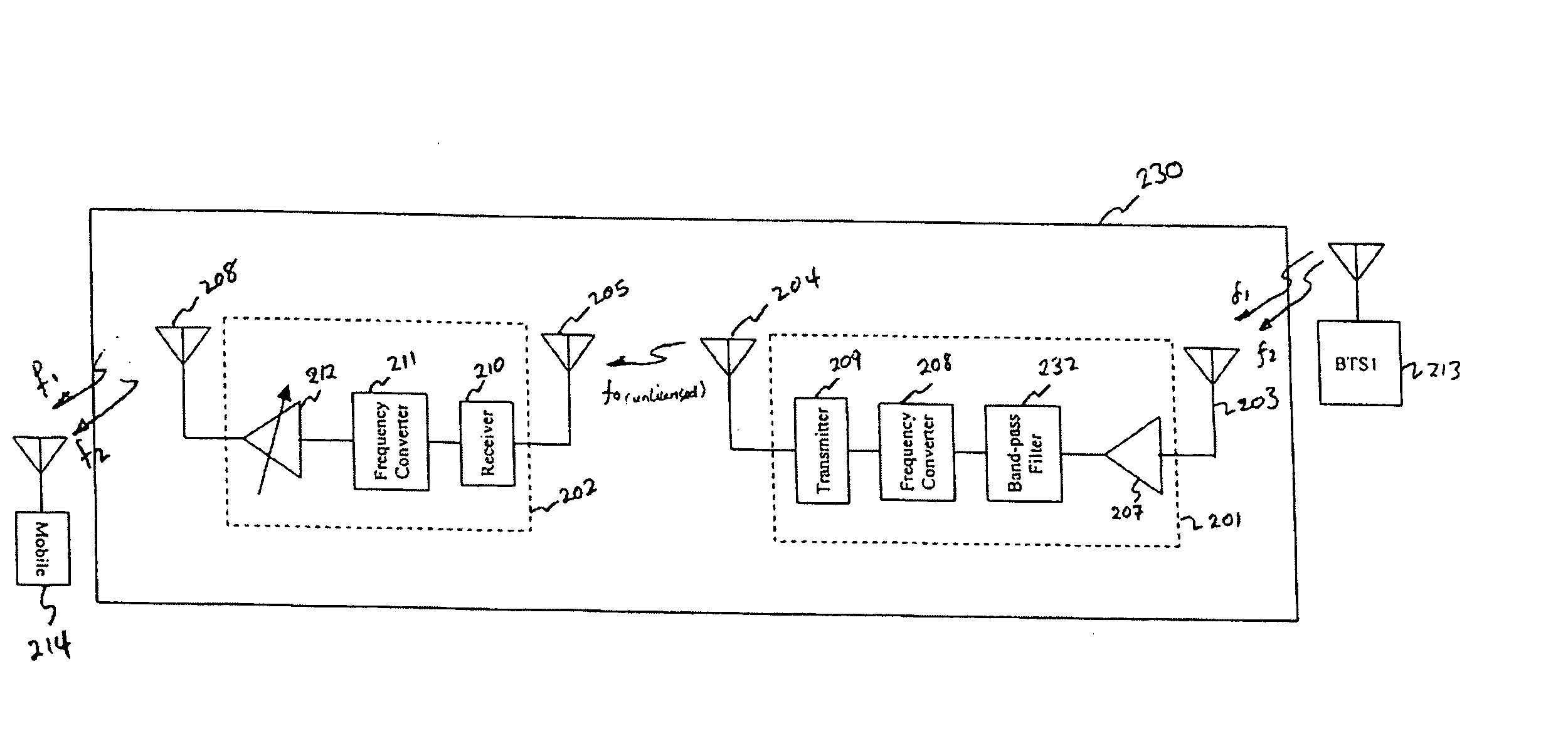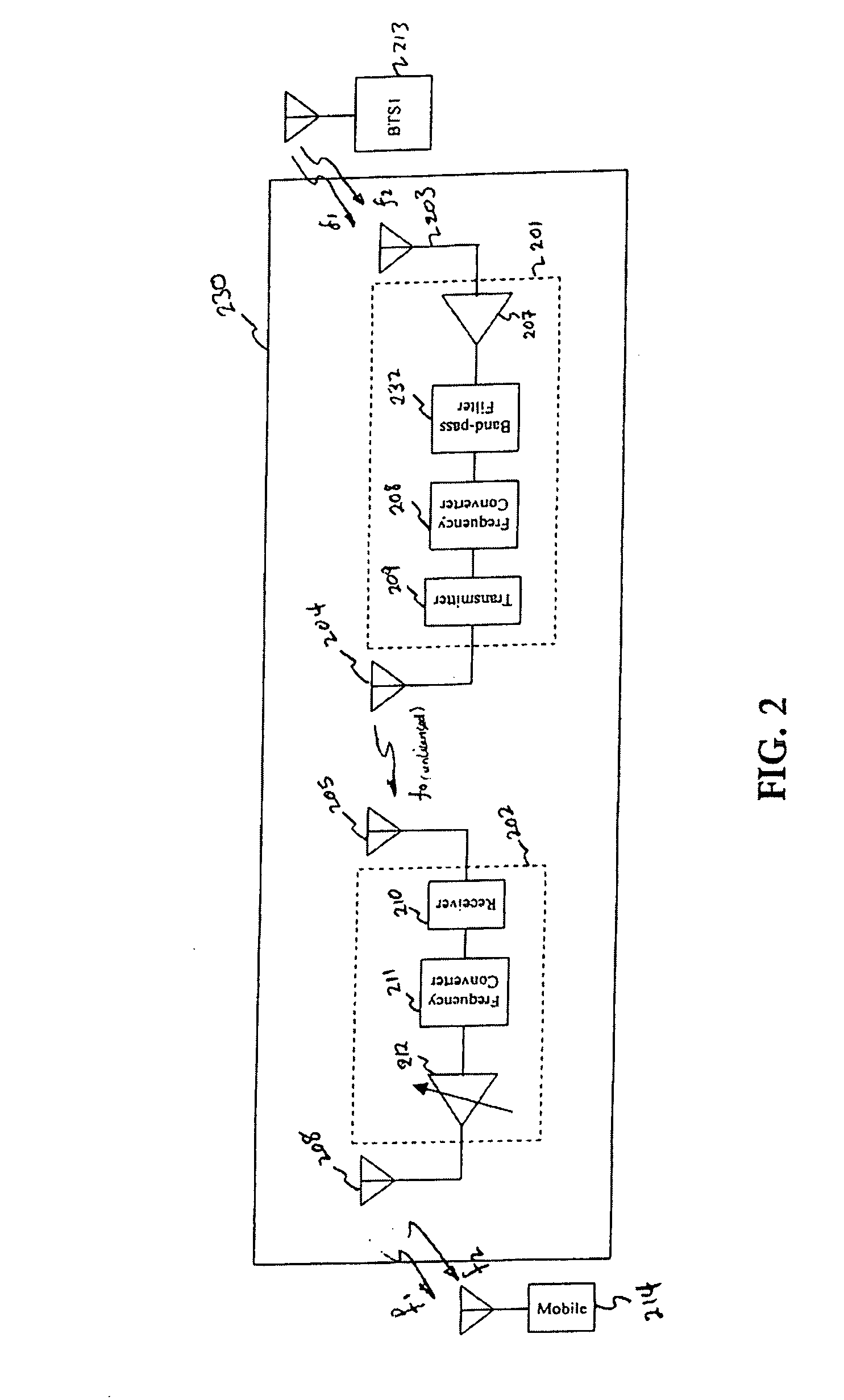Short-range cellular booster
a cellular booster and short-range technology, applied in the field of short-range cellular boosters, can solve the problems of poor convergence, reduced link budget and cell footprint, and low information bit energy (esub>b/sub>), and achieve the effect of facilitating signal communication
- Summary
- Abstract
- Description
- Claims
- Application Information
AI Technical Summary
Benefits of technology
Problems solved by technology
Method used
Image
Examples
implementation example
ANALOGUE IMPLEMENTATION EXAMPLE
[0025]FIG. 1 shows a cellular network 100 with two base stations (BTS1 (101) & BTS2 (102)). A typical network supports more than two base stations. The disclosed system may be applied in any size network, regardless of the supported number of base stations. BTS1101 is connected to Base Station Controller BSC1107. BTS2102 is connected to Base Station Controller BSC2108. BTS2102 can also be connected to Base Station Controller BSC1107, instead of BSC2108. BSC1107 is connected to Mobile Switching Center MSC 109. BSC2108 is connected to MSC 109, or instead may be connected to another MSC in the network. MSC 109 is connected to PSTN 110. BTS1101 has an associated coverage area 103. BTS2102 has an associated coverage area 104. These coverage areas may or may not overlap. However, usually the network is planned such that there is considerable overlap, to facilitate handoffs. The mobile terminal 105 is inside building 106, in the coverage area 103 communicatin...
digital implementation example
[0097]FIG. 12 shows an example of digital implementation of the Network unit 602 (labeled 1002 in FIG. 12), which is placed where good signal coverage exists, indoor or outdoors. Two antennas 1004 and 1006 are used for antenna diversity for the cellular band transmitter and receiver of the Network unit 1002. Also two antennas 1036 and 1038 are used for antenna diversity of the U-NII band operation of the Network unit 1002. Although, any diversity-combining scheme such as Maximal Ratio Combining, etc. can be used for the receiver chain, and transmit diversity schemes such as random phase change in one or both antennas for the transmitter chain, a simple scheme that is based on antenna switched diversity with “continuous switching” strategy is suggested here. The continuous switching strategy, with the switching rate selected for optimum performance (e.g. at, or twice the GSM Timeslot rate ˜4.6 msec), can be used for both transmit and receive operations, and will result in a nominal a...
PUM
 Login to View More
Login to View More Abstract
Description
Claims
Application Information
 Login to View More
Login to View More - R&D
- Intellectual Property
- Life Sciences
- Materials
- Tech Scout
- Unparalleled Data Quality
- Higher Quality Content
- 60% Fewer Hallucinations
Browse by: Latest US Patents, China's latest patents, Technical Efficacy Thesaurus, Application Domain, Technology Topic, Popular Technical Reports.
© 2025 PatSnap. All rights reserved.Legal|Privacy policy|Modern Slavery Act Transparency Statement|Sitemap|About US| Contact US: help@patsnap.com



